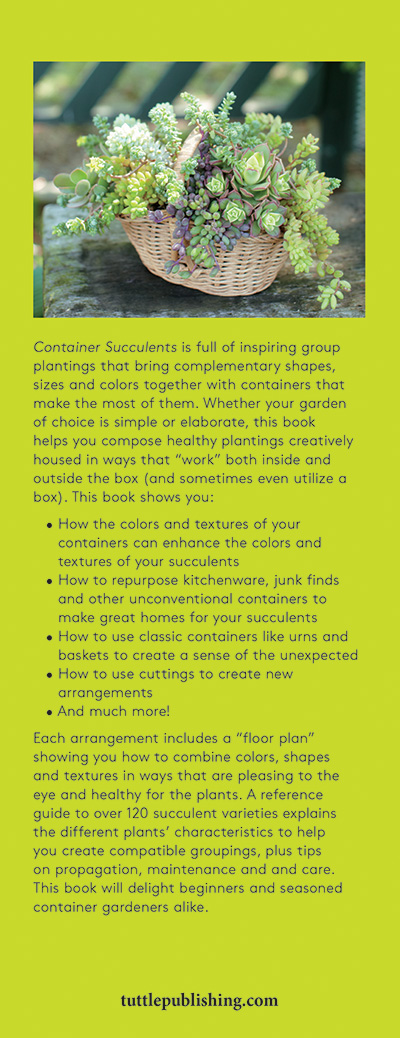 Container SUCCULENTS CREATIVE IDEAS FOR BEGINNERS
Container SUCCULENTS CREATIVE IDEAS FOR BEGINNERS  Kentaro Kuroda
Kentaro Kuroda
Ayako Eifuku 
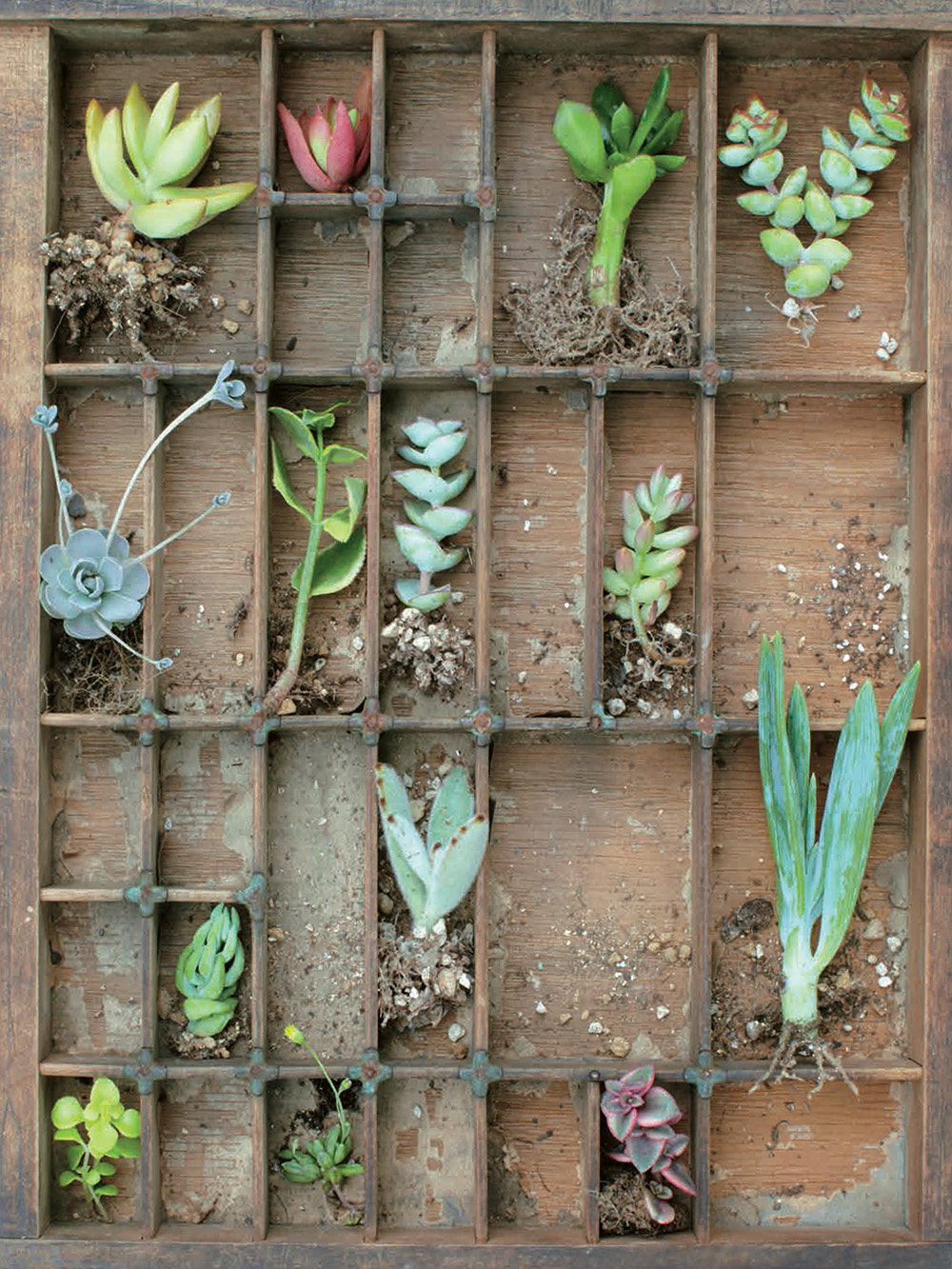 Preface Whenever someone asks us about succulents in the store, the conversation just goes on and on. Theres so much to say about the changing leaf colors and blooms of succulents, their maintenance, how to grow them, little tips on group plantings we just want more and more people to enjoy spending time with succulents and to share in their many charms. Its this shared passion that has grown into this book. As succulents have small root systems and dont require much water, little ornamental cups, everyday objects and even empty cans make fantastic pots for them. Even if they are small or shallow, as long as there is room for soil, they can be used for group plantings of succulents. We make novel discoveries nearly every day, and have incorporated them into the projects in this book.
Preface Whenever someone asks us about succulents in the store, the conversation just goes on and on. Theres so much to say about the changing leaf colors and blooms of succulents, their maintenance, how to grow them, little tips on group plantings we just want more and more people to enjoy spending time with succulents and to share in their many charms. Its this shared passion that has grown into this book. As succulents have small root systems and dont require much water, little ornamental cups, everyday objects and even empty cans make fantastic pots for them. Even if they are small or shallow, as long as there is room for soil, they can be used for group plantings of succulents. We make novel discoveries nearly every day, and have incorporated them into the projects in this book.
One of our favorite works is the group planting around the letter F in a shallow planter box. We used only low-growing varieties to create the special look that only succulents can convey. For the wreaths and bouquets that so many people want to try making, we used plants grown from leaves and cuttings. They take some time and effort, but this particular kind of projectcreating something from plants youve grown yourselfgives the added pleasure of starting from scratch to make something beautiful, alive and long lasting. The significant hurdle of having to devote daily time to proper care doesnt exist when it comes to succulents; part of their charm lies in how easy it is to grow them. There is pleasure in looking at them, growing them, choosing pots, creating group plantings, displaying them and more.
Starting with a single pot, we hope that even beginners will discover the delights of spending time with succulents. Kentaro Kuroda and Ayako Eifuku The Characteristics and Charms of Succulents Cute and easy to grow Sturdy plants that cope well in dry harsh conditions Originating mainly from southern Africa, the islands of Madagascar, Central and South America, these plants have evolved to suit harsh environments such as deserts with extremely low rainfall, barren plains with extreme differences in temperature from day to night, and so on.
Sturdy plants that cope well in dry harsh conditions Originating mainly from southern Africa, the islands of Madagascar, Central and South America, these plants have evolved to suit harsh environments such as deserts with extremely low rainfall, barren plains with extreme differences in temperature from day to night, and so on. 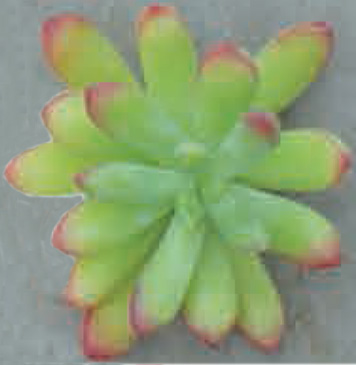 They thrive on little water In order to cope in a dry environment, succulents have adapted to store water and nutrients in their leaves, stems and roots. For this reason, as long as they are in an environment with plenty of sunlight and where air circulates well, there is no need to worry too much about watering.
They thrive on little water In order to cope in a dry environment, succulents have adapted to store water and nutrients in their leaves, stems and roots. For this reason, as long as they are in an environment with plenty of sunlight and where air circulates well, there is no need to worry too much about watering. 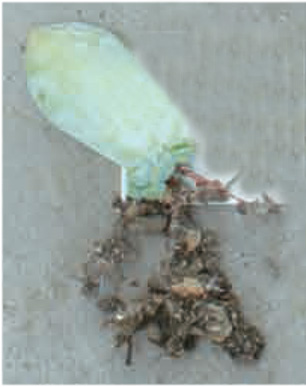 Little time and effort required If cultivated in similar conditions to their place of origin, succulents will grow slowly and only require repotting every one to two years.
Little time and effort required If cultivated in similar conditions to their place of origin, succulents will grow slowly and only require repotting every one to two years.  Easy to propagate Save the cuttings when you prune.
Easy to propagate Save the cuttings when you prune.  Easy to propagate Save the cuttings when you prune.
Easy to propagate Save the cuttings when you prune.
Remove leaves from the end and insert the stem into your potting soil. Or start a new plant from a leaf. Give the ends of the leaf a few days to dry, then lay the leaf on soil.  Unique forms and a rainbow of colors Succulents knowledge of how to store water and nutrients has resulted in their fleshy, individualistic leaves and stems. Chubby, soft, shiny succulents are found in shapes and textures not seen in other plants.
Unique forms and a rainbow of colors Succulents knowledge of how to store water and nutrients has resulted in their fleshy, individualistic leaves and stems. Chubby, soft, shiny succulents are found in shapes and textures not seen in other plants. 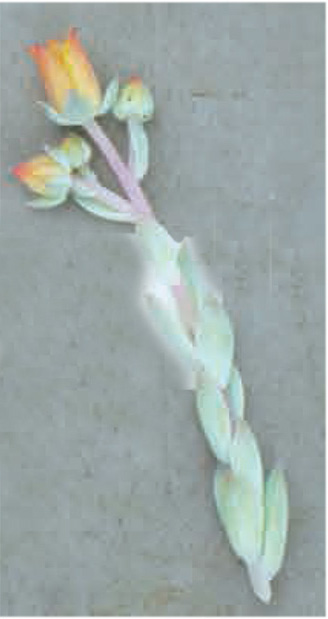 A wealth of different varieties It is said that there are more than 20,000 varieties of succulents, so their appeal never fades.
A wealth of different varieties It is said that there are more than 20,000 varieties of succulents, so their appeal never fades.  A wealth of different varieties It is said that there are more than 20,000 varieties of succulents, so their appeal never fades.
A wealth of different varieties It is said that there are more than 20,000 varieties of succulents, so their appeal never fades.
With so many to choose from, the combinations are endless, and you can create all kinds of group plantings that highlight differences in form, color and texture. 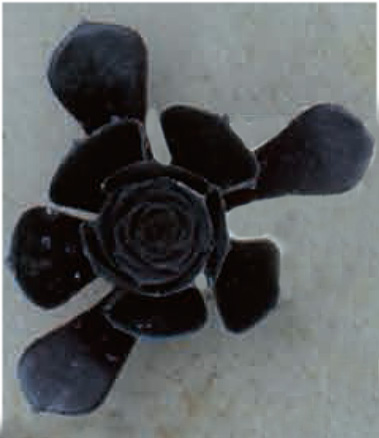 Vibrant changes of color Succulents start changing color when the weather starts to get cooler, turning red and pink shades that are different from their spring to fall colors. The bigger the difference in temperature between day and night, the more attractive the display.
Vibrant changes of color Succulents start changing color when the weather starts to get cooler, turning red and pink shades that are different from their spring to fall colors. The bigger the difference in temperature between day and night, the more attractive the display. 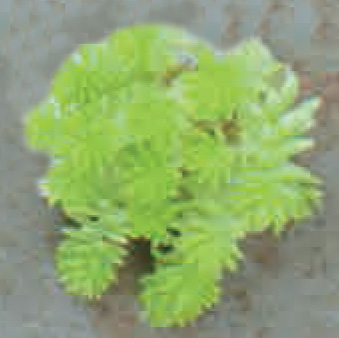 Beautiful blooms Another charm when it comes to succulents is that plants whose humorous appearance would seem to make it unimaginable can blossom with lovely, remarkable flowers. While some flower in spring, others have vivid blossoms in summer.
Beautiful blooms Another charm when it comes to succulents is that plants whose humorous appearance would seem to make it unimaginable can blossom with lovely, remarkable flowers. While some flower in spring, others have vivid blossoms in summer. 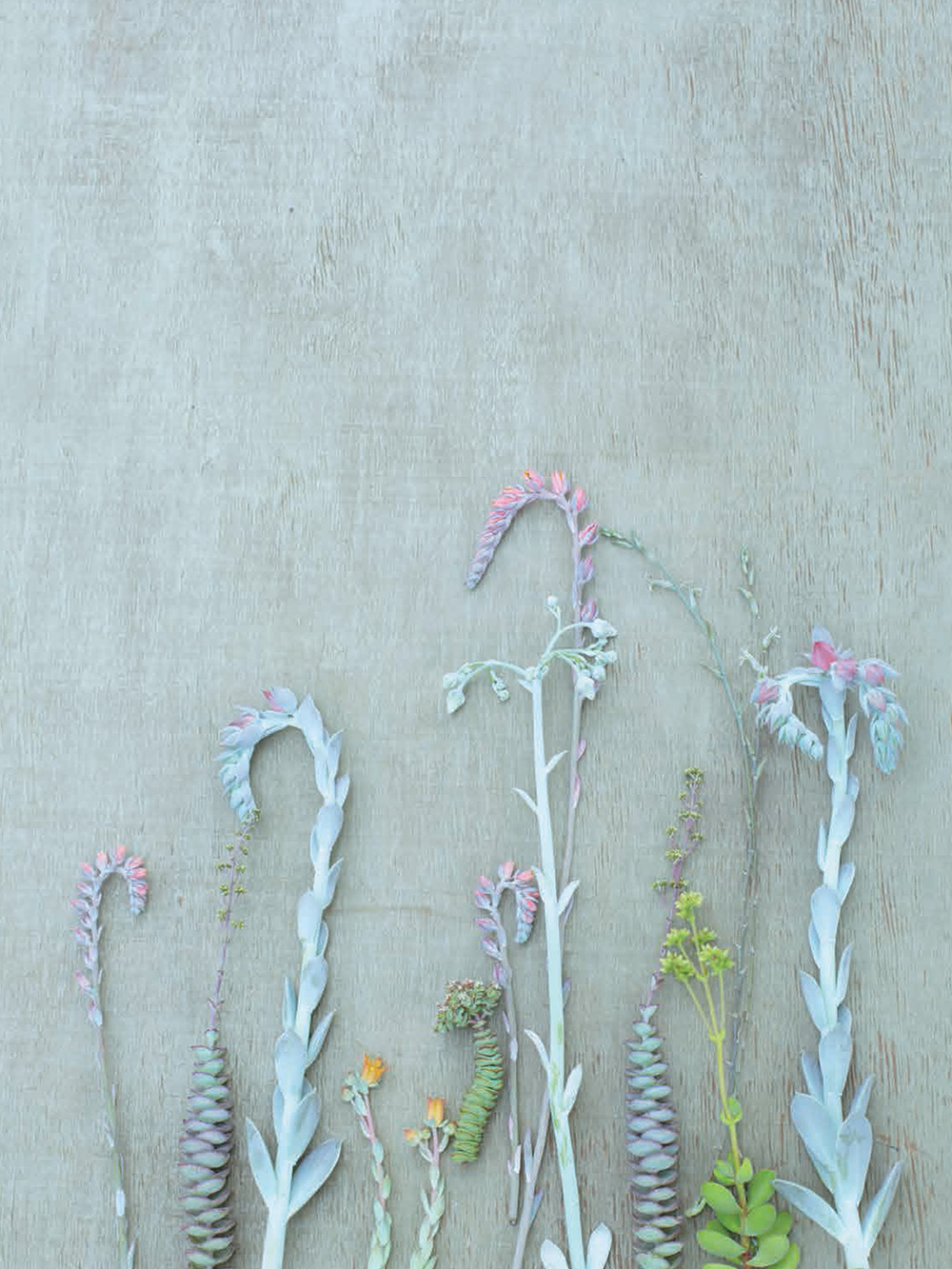 No experience with succulents? No problem! In this book, we will show you the tricks to showing off the shapes, colors and textures of succulents to maximum effect, making attractive group plantings easy and fun. Creating simple group plantings that bring out the succulents individuality Chapter I (p.13 ~) With their fleshy, unique leaves, succulents grow in a variety of ways and have textures and movement all of their ownthere are spreading types, vertical growers, types that trail down, types that grow in clumps and others with fluffy textures. Creating simple group plantings that bring out the succulents individuality Chapter I (p.13 ~) With their fleshy, unique leaves, succulents grow in a variety of ways and have textures and movement all of their ownthere are spreading types, vertical growers, types that trail down, types that grow in clumps and others with fluffy textures.
No experience with succulents? No problem! In this book, we will show you the tricks to showing off the shapes, colors and textures of succulents to maximum effect, making attractive group plantings easy and fun. Creating simple group plantings that bring out the succulents individuality Chapter I (p.13 ~) With their fleshy, unique leaves, succulents grow in a variety of ways and have textures and movement all of their ownthere are spreading types, vertical growers, types that trail down, types that grow in clumps and others with fluffy textures. Creating simple group plantings that bring out the succulents individuality Chapter I (p.13 ~) With their fleshy, unique leaves, succulents grow in a variety of ways and have textures and movement all of their ownthere are spreading types, vertical growers, types that trail down, types that grow in clumps and others with fluffy textures.
Here, we present tips to highlight succulents individual features, from choosing a pot to methods of planting. Creating group plantings to highlight the charms of various styles Chapter II (p.35 ~) The combination of the pot and succulents is crucial to achieving your envisaged creation. Here we provide advice on how to create stylish, appealing group plantings by choosing pots in mediums, colors, shapes, textures and so on to complement succulents individual features. Take hints from the works featured to bring your own group planting visions to lifeand have fun doing it!
Next page








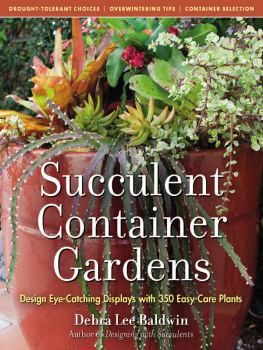
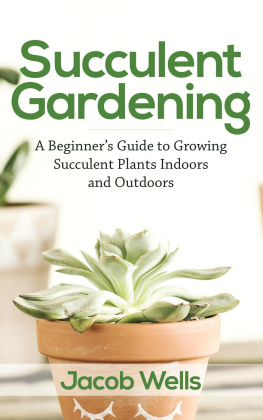

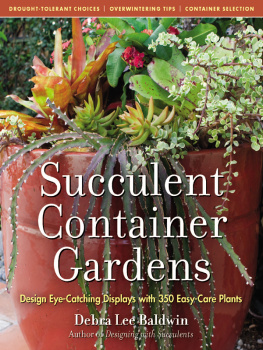
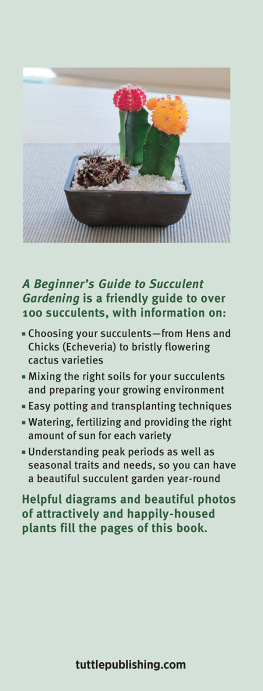
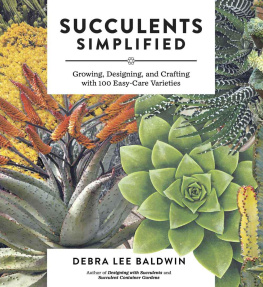

 Container SUCCULENTS CREATIVE IDEAS FOR BEGINNERS
Container SUCCULENTS CREATIVE IDEAS FOR BEGINNERS  Kentaro Kuroda
Kentaro Kuroda
 Preface Whenever someone asks us about succulents in the store, the conversation just goes on and on. Theres so much to say about the changing leaf colors and blooms of succulents, their maintenance, how to grow them, little tips on group plantings we just want more and more people to enjoy spending time with succulents and to share in their many charms. Its this shared passion that has grown into this book. As succulents have small root systems and dont require much water, little ornamental cups, everyday objects and even empty cans make fantastic pots for them. Even if they are small or shallow, as long as there is room for soil, they can be used for group plantings of succulents. We make novel discoveries nearly every day, and have incorporated them into the projects in this book.
Preface Whenever someone asks us about succulents in the store, the conversation just goes on and on. Theres so much to say about the changing leaf colors and blooms of succulents, their maintenance, how to grow them, little tips on group plantings we just want more and more people to enjoy spending time with succulents and to share in their many charms. Its this shared passion that has grown into this book. As succulents have small root systems and dont require much water, little ornamental cups, everyday objects and even empty cans make fantastic pots for them. Even if they are small or shallow, as long as there is room for soil, they can be used for group plantings of succulents. We make novel discoveries nearly every day, and have incorporated them into the projects in this book. Sturdy plants that cope well in dry harsh conditions Originating mainly from southern Africa, the islands of Madagascar, Central and South America, these plants have evolved to suit harsh environments such as deserts with extremely low rainfall, barren plains with extreme differences in temperature from day to night, and so on.
Sturdy plants that cope well in dry harsh conditions Originating mainly from southern Africa, the islands of Madagascar, Central and South America, these plants have evolved to suit harsh environments such as deserts with extremely low rainfall, barren plains with extreme differences in temperature from day to night, and so on.  They thrive on little water In order to cope in a dry environment, succulents have adapted to store water and nutrients in their leaves, stems and roots. For this reason, as long as they are in an environment with plenty of sunlight and where air circulates well, there is no need to worry too much about watering.
They thrive on little water In order to cope in a dry environment, succulents have adapted to store water and nutrients in their leaves, stems and roots. For this reason, as long as they are in an environment with plenty of sunlight and where air circulates well, there is no need to worry too much about watering.  Little time and effort required If cultivated in similar conditions to their place of origin, succulents will grow slowly and only require repotting every one to two years.
Little time and effort required If cultivated in similar conditions to their place of origin, succulents will grow slowly and only require repotting every one to two years.  Easy to propagate Save the cuttings when you prune.
Easy to propagate Save the cuttings when you prune.  Unique forms and a rainbow of colors Succulents knowledge of how to store water and nutrients has resulted in their fleshy, individualistic leaves and stems. Chubby, soft, shiny succulents are found in shapes and textures not seen in other plants.
Unique forms and a rainbow of colors Succulents knowledge of how to store water and nutrients has resulted in their fleshy, individualistic leaves and stems. Chubby, soft, shiny succulents are found in shapes and textures not seen in other plants.  A wealth of different varieties It is said that there are more than 20,000 varieties of succulents, so their appeal never fades.
A wealth of different varieties It is said that there are more than 20,000 varieties of succulents, so their appeal never fades.  Vibrant changes of color Succulents start changing color when the weather starts to get cooler, turning red and pink shades that are different from their spring to fall colors. The bigger the difference in temperature between day and night, the more attractive the display.
Vibrant changes of color Succulents start changing color when the weather starts to get cooler, turning red and pink shades that are different from their spring to fall colors. The bigger the difference in temperature between day and night, the more attractive the display.  Beautiful blooms Another charm when it comes to succulents is that plants whose humorous appearance would seem to make it unimaginable can blossom with lovely, remarkable flowers. While some flower in spring, others have vivid blossoms in summer.
Beautiful blooms Another charm when it comes to succulents is that plants whose humorous appearance would seem to make it unimaginable can blossom with lovely, remarkable flowers. While some flower in spring, others have vivid blossoms in summer.  No experience with succulents? No problem! In this book, we will show you the tricks to showing off the shapes, colors and textures of succulents to maximum effect, making attractive group plantings easy and fun. Creating simple group plantings that bring out the succulents individuality Chapter I (p.13 ~) With their fleshy, unique leaves, succulents grow in a variety of ways and have textures and movement all of their ownthere are spreading types, vertical growers, types that trail down, types that grow in clumps and others with fluffy textures. Creating simple group plantings that bring out the succulents individuality Chapter I (p.13 ~) With their fleshy, unique leaves, succulents grow in a variety of ways and have textures and movement all of their ownthere are spreading types, vertical growers, types that trail down, types that grow in clumps and others with fluffy textures.
No experience with succulents? No problem! In this book, we will show you the tricks to showing off the shapes, colors and textures of succulents to maximum effect, making attractive group plantings easy and fun. Creating simple group plantings that bring out the succulents individuality Chapter I (p.13 ~) With their fleshy, unique leaves, succulents grow in a variety of ways and have textures and movement all of their ownthere are spreading types, vertical growers, types that trail down, types that grow in clumps and others with fluffy textures. Creating simple group plantings that bring out the succulents individuality Chapter I (p.13 ~) With their fleshy, unique leaves, succulents grow in a variety of ways and have textures and movement all of their ownthere are spreading types, vertical growers, types that trail down, types that grow in clumps and others with fluffy textures.